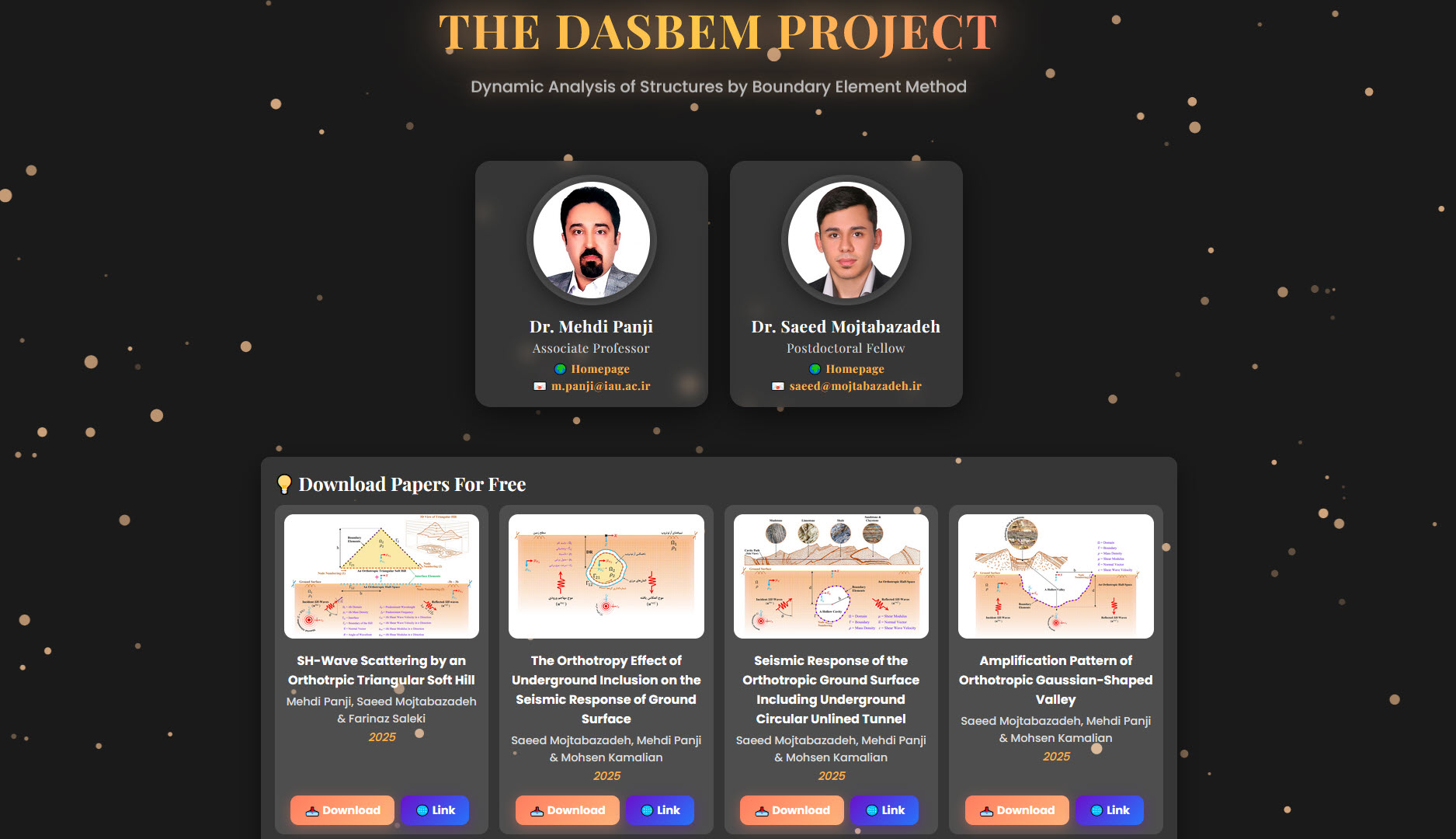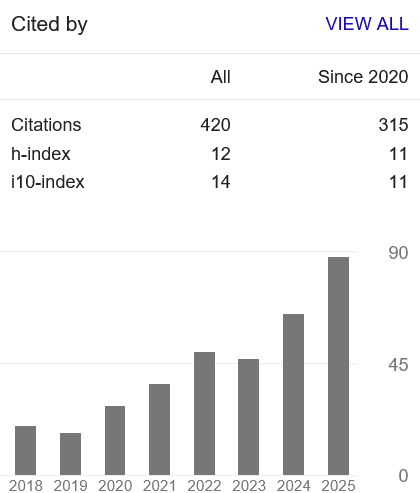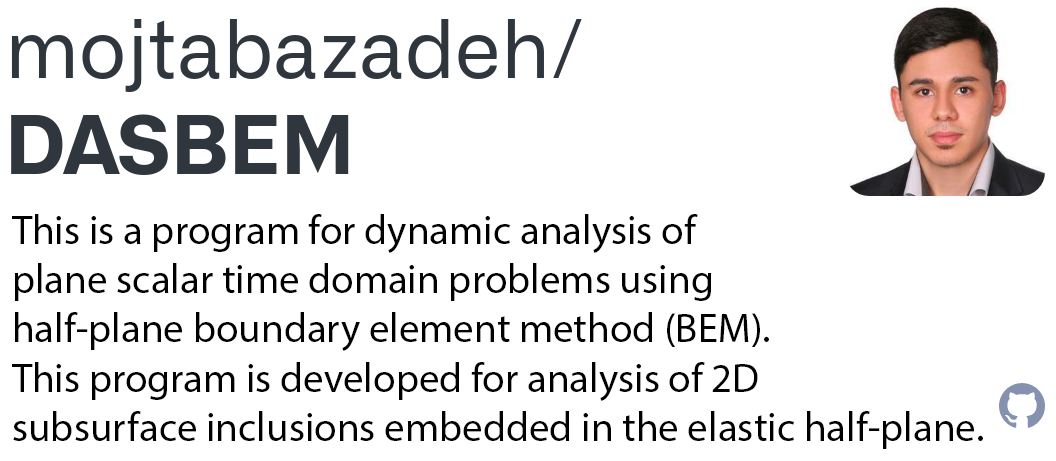The Dynamic Analysis of Structures by Boundary Element Method Project stands as an advanced computational tool tailored for the dynamic analysis of plane scalar time-domain challenges over an isotropic half-space. The detailed flowchart in figure below, outlines the functionality of The DASBEM Project for seismic analysis of subsurface inclusions. This numerical procedure is seamlessly executed through the MATLAB programming software.
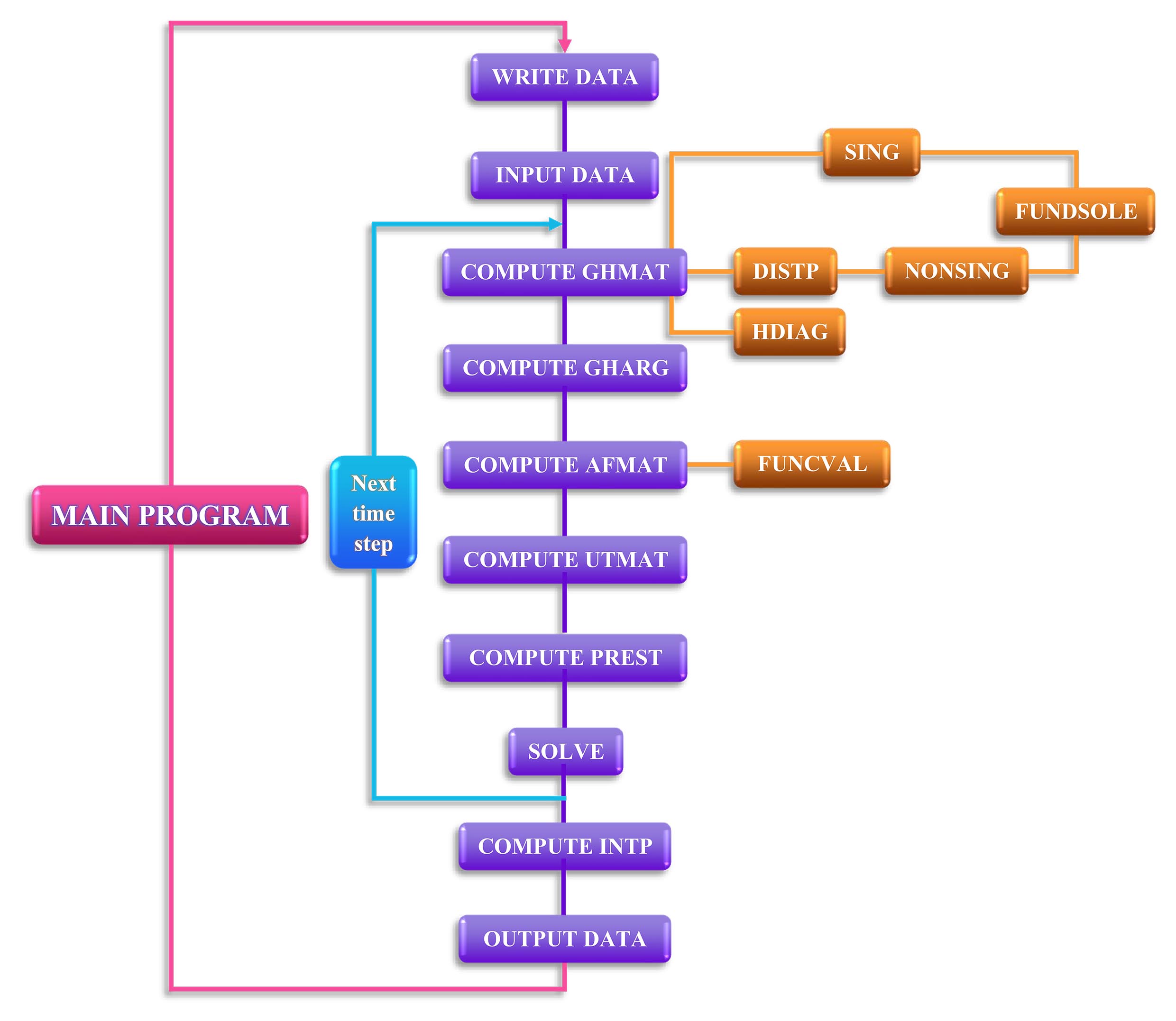
INPUT DATA: Retrieve input from the file generated by the WRITE DATA sub-problem. This includes shear wave velocity, number of time steps, number and coordinates of boundary nodes, their boundary conditions, number of internal points, and any existing loading data.
COMPUTE GHMAT: Calculate the elements of matrices G and H using numerical integration.
NONSING: Determine the non-singular elements of the aforementioned matrices.
SING: Identify the singular elements of matrix G using specialized numerical integration.
FUNSOLE: Incorporate elastodynamic fundamental solutions for half-plane conditions, utilized by NONSING and SING during numerical integration.
HDIAG: Compute the diagonal elements of matrix H.
COMPUTE GHARG: Assemble the matrices computed in previous steps.
COMPUTE AFMAT: Formulate the solvable equations based on boundary conditions at each node.
FUNCVAL: This sub-program is invoked by COMPUTE AFMAT when loading is in the form of external vibrations.
COMPUTE UTMAT: Establish the boundary conditions for u and q.
COMPUTE PREST: Incorporate historical dynamic time data and call for the current free-field motion boundary.
COMPUTE INTP: Calculate responses at internal points.
OUTPUT DATA: Output responses from boundary nodes and internal points.
![]()
Step-by-step guide to using The DASBAM Project
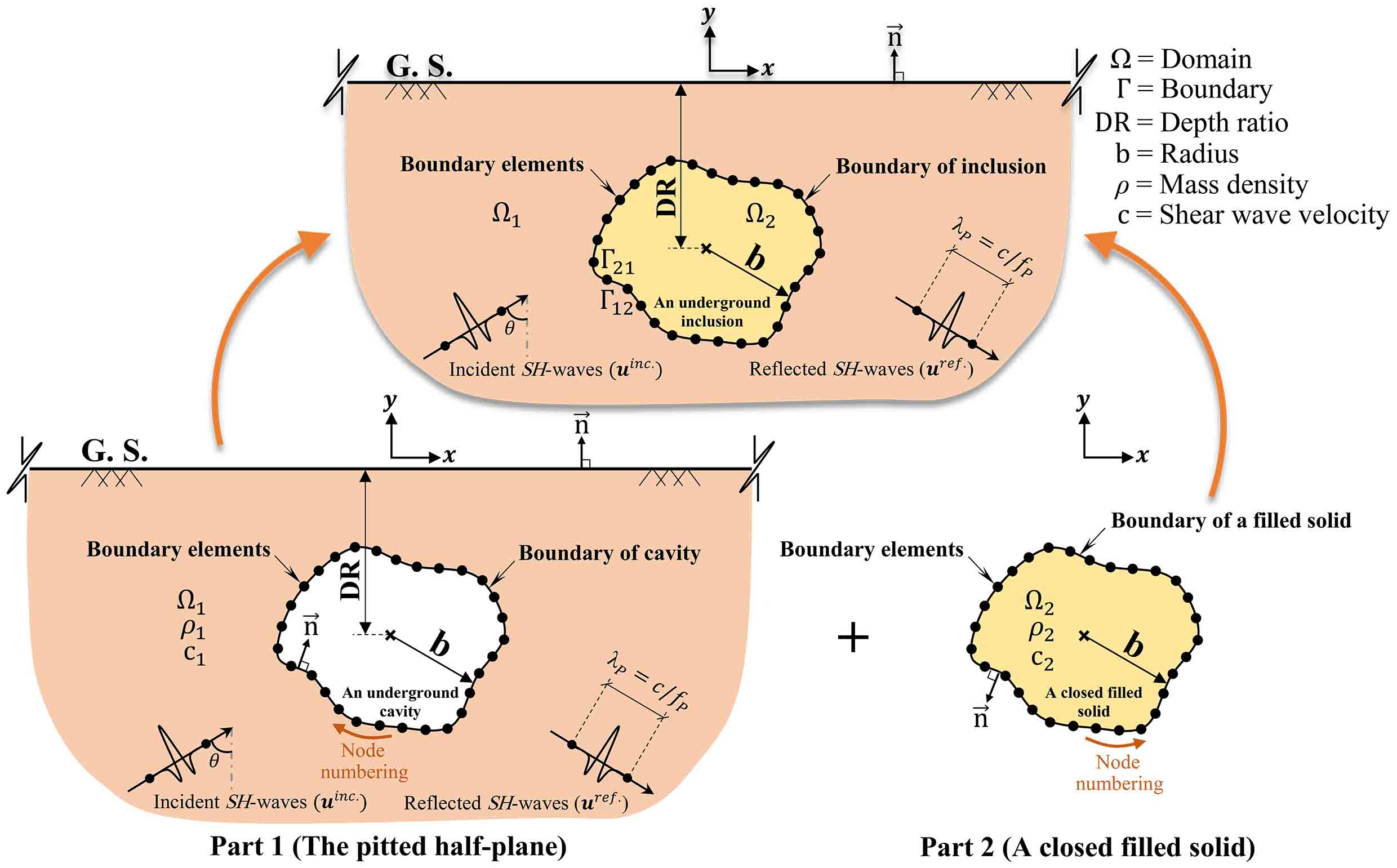
🔸 WRITE_DATA
- Open WRITE_DATA and set the following values: a) Shear modulus of the domain and inclusion (assumed values: '16e5' and '3.24e5', respectively). b) Density of the domain and inclusion (assumed values: '1' and '0.6667', respectively). c) Number of time steps and time increments (assumed values: '400' and '0.0175', respectively). d) Radius (b) and depth (D) of the inclusion (assumed values: '500' and '750', respectively). e) Shape of the inclusion (assumed shape: circular). f) Size of half-element (assumed value: '30'). g) Predominant frequency (assumed value: '3'). h) Time shift parameter (assumed value: '2.4'). i) Angle of incident wave (assumed angle: '0'). j) Range of ground surface "internal points" (assumed value: '-3b to 3b').
🔸 MAIN_PROGRAM
- Open MAIN_PROGRAM and execute it. Wait until the calculations are complete.
🔸 CONVERGENCE_DIAGRAM
- Refer to CONVERGENCE_DIAGRAM to determine if convergence in responses has been achieved.
🔸 FFT
- Use FFT to display the 2D normalized displacement amplitude (NDA) of the surface.
🔸 DIAGRAM_3D
- Use DIAGRAM_3D to visualize the 3D time and frequency domain responses.
![]()
Some computed results from The DASBAM Project for a subsurface inclusion
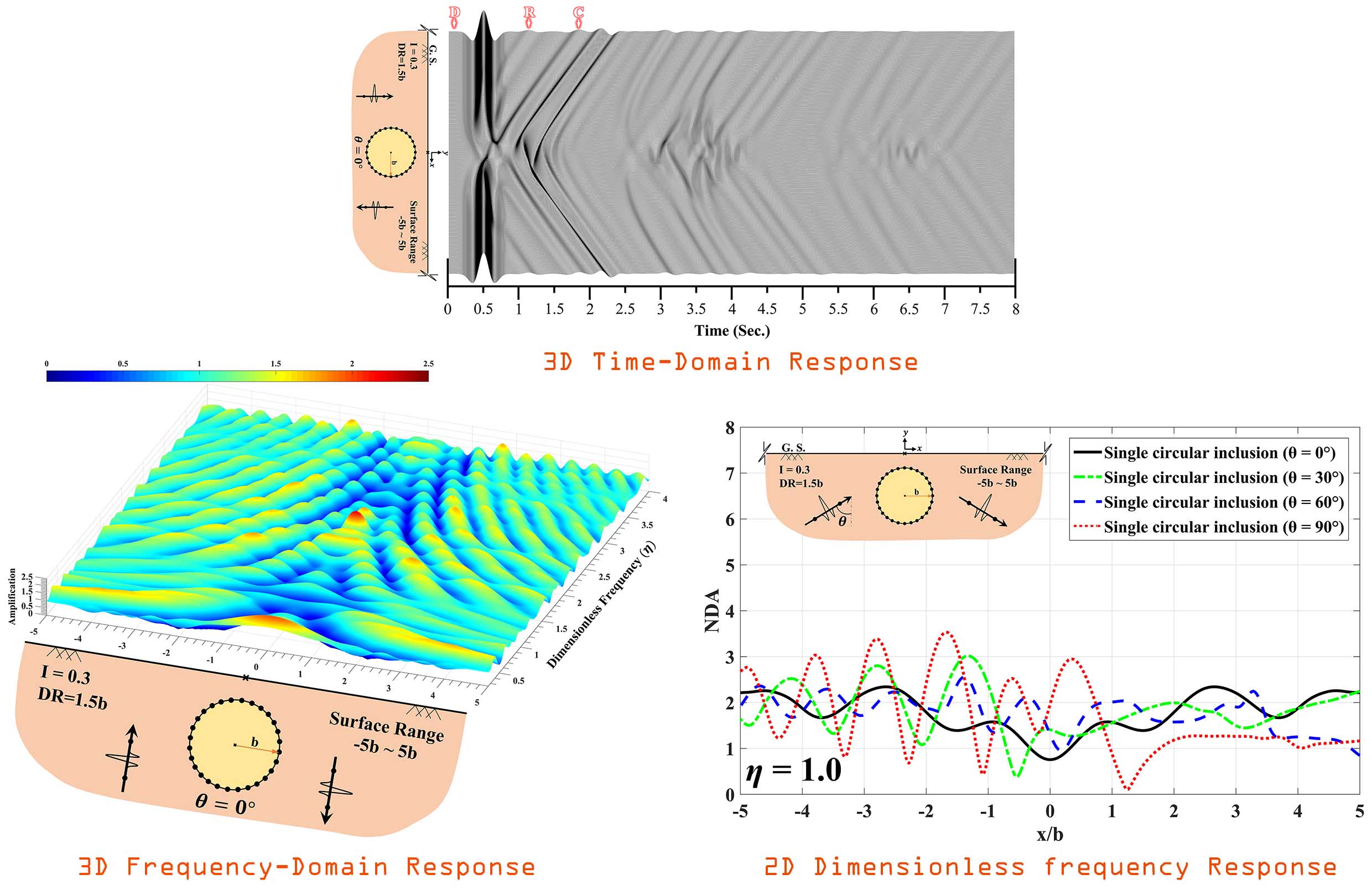
⚠️ Utilizing The DASBAM Project with proper attribution is permitted ⚠️
🔻 معرفی مختصر
 دکتر سعید مجتبیزاده حسنلوئی، به عنوان اولین پژوهشگر پسادکتری مهندسی عمران-ژئوتکنیک در ایران، از سال 1394 بر توسعهی الگوریتمهای محاسباتی و مدلسازی عددی پیشرفته در حوزهی ژئومکانیک لرزهای متمرکز شده است. او رسالهی دورهی دکتری تخصصی و طرح پژوهشی پسادکتری خویش را بر مسألهی انتشار و پراکنش امواج لرزهای در محیطهای با خواص اورتوتروپیک از جمله عوارض توپوگرافی گوناگون، با استفاده از روش اجزای مرزی نیمفضای مستقیم در حوزهی زمان معطوف نموده است. از موضوعات پژوهشی مورد علاقهی وی میتوان به توسعهی روشهای عددی همچون روش اجزای مرزی، اجزای محدود و رویکردهای ترکیبی جهت مدلسازی و تحلیل عددی مسائل لرزهای، بررسی اثرات ساختگاهی ناشی از حضور عوارض توپوگرافی سطحی و زیرسطحی، مکانیک محیطهای نانو/متخلخل و ایزولاسیون لرزهای اشاره نمود.
دکتر سعید مجتبیزاده حسنلوئی، به عنوان اولین پژوهشگر پسادکتری مهندسی عمران-ژئوتکنیک در ایران، از سال 1394 بر توسعهی الگوریتمهای محاسباتی و مدلسازی عددی پیشرفته در حوزهی ژئومکانیک لرزهای متمرکز شده است. او رسالهی دورهی دکتری تخصصی و طرح پژوهشی پسادکتری خویش را بر مسألهی انتشار و پراکنش امواج لرزهای در محیطهای با خواص اورتوتروپیک از جمله عوارض توپوگرافی گوناگون، با استفاده از روش اجزای مرزی نیمفضای مستقیم در حوزهی زمان معطوف نموده است. از موضوعات پژوهشی مورد علاقهی وی میتوان به توسعهی روشهای عددی همچون روش اجزای مرزی، اجزای محدود و رویکردهای ترکیبی جهت مدلسازی و تحلیل عددی مسائل لرزهای، بررسی اثرات ساختگاهی ناشی از حضور عوارض توپوگرافی سطحی و زیرسطحی، مکانیک محیطهای نانو/متخلخل و ایزولاسیون لرزهای اشاره نمود.
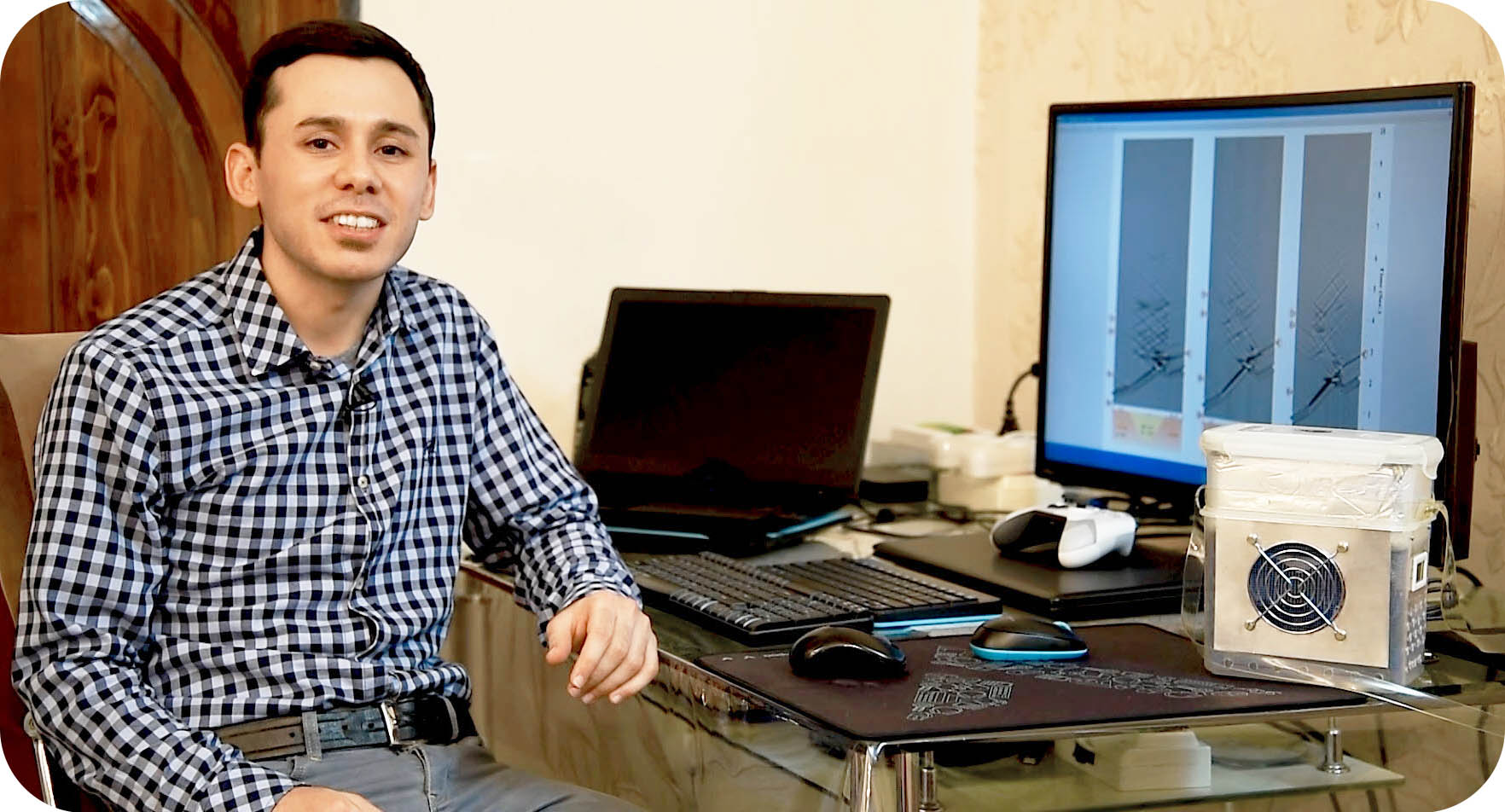

🔻 فهرست موضوعات
🔻 تلویزیون وبگاه
🔻 راههای ارتباطی
🔻 دانلود رایگان مقالات من
🔻 پروفایلها
🔻 پیوندها
🔻 عناوین مرتبط
- ⚜️ رسانه مجازی شبکه اشراق
- ⚜️ مجله مهندسی تونل و فضاهای زیرزمینی
- ⚜️ ویکیپدیا
- ⚜️ صفحهی من در ویرگول
- ⚜️ باشگاه مدیران ایران
- ⚜️ یازدهمین کنگره ملی مهندسی عمران
- ⚜️ تحلیل، طراحی و اجرای سازههای ژئووال
- ⚜️ وبلاگ علمی دکتر مهدی پنجی
- ⚜️ مگیران
- ⚜️ سامانه نشریات علمی ایران
- ⚜️ پنجمین دوره مسابقات ژئووال
- ⚜️ فصلنامه علمی علوم و مهندسی زلزله
- ⚜️ مجله عمران دانشگاه صنعتی امیرکبیر
- ⚜️ مجله عمران دانشگاه صنعتی شریف
- ⚜️ مجله زیرساختهای حمل و نقل
- ⚜️ خبرگزاری دانشجو
- ⚜️ سیویلیکا


